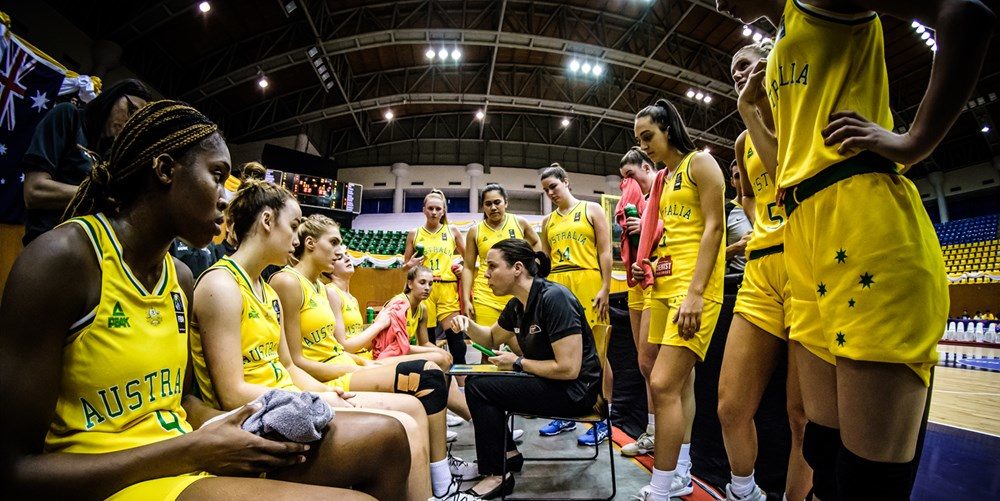The size of coaching staffs at all levels of the game continues to grow. We look at some ways to manage efficiencies and take advantage of the coaching “team”.
Even at the junior level, the number of coaches on team benches continues to grow. Many youth teams have two assistants supporting the head coach and at the Australian Junior Championship level, often there is an additional “development” coach or perhaps a mentor sitting on the bench.
At the senior level, staffs are expanding, with professional and international teams looking for that one competitive edge. This may be through advanced scouting, video, technology or the use of analytics.
While more hands on deck can help spread the load and ensure teams are leaving no stone unturned, more people means more personalities and more moving pieces for the head coach to manage. Having consistent messaging from all coaches is crucial and doesn’t happen by chance.

At practice –
Many hands make light work and having more coaches in the practice environment can be a huge bonus. Used efficiently, an expanded coaching staff can ensure drills can run smoothly, the staff can cover the offence, defence and points of emphasis and there is an efficiency to how the practice operates.
But without leadership and a systematic plan, more coaches can simply create more noise and be confusing for players. Some keys to consider for managing your practice are –
- Coach spacing – there can be a tendency for coaches to huddle and talk the game as practice runs. Ensuring the coaches “corral” the court is important to efficient practice
- Coach on the run – more coaches can mean more stoppages in practice as everyone wants to “coach”. Clear delineation of who and when practice can be stopped is a key to maintaining flow
- Assign key areas of responsibility – many times assistants are head coaches at some level so can tend to coach the “whole game”. Consider assigning coaches areas of focus such as defensive transition , boxing out, passing, weak-side movement
- Everyone with a note pad – having coaches take notes on the run can assist with the practice evaluation

In preparation –
Preparation, scouting and game planning are huge aspects of coaching, especially in the tournament setting in which so much youth basketball is played at both national and international level.
With multiple games in a short space of time, multiple opponents to scout and short practices, being time efficient is crucial. Having a system and plan to maximise the time and respective skill sets of the coaching staff is a big piece to the puzzle.
Areas to consider –
- Who is the lead scout?
- Who has the other pool with an eye to crossovers?
- Who is leading on video, including equipment, filming, cataloguing and planning?
- Who is focusing on team scouts, individuals and game planning?
- Who talks/presents in team meetings and when?
One of the most important traits for a good assistant coach is the ability to be pro-active and troubleshoot small issues, rather than go to the head coach with every detail. This takes leadership and the willingness to empower by the coach.
In the game –

Every coach loves the game setting and wants to be involved “when the lights go on”. Having a cohesive and efficient bench structure is key to successful game coaching.
Respected Canada Basketball coaching leader Mike MacKay summed up the role of the assistant coaches in game perfectly. Assistants are providing one of three things and need to know when each is required.
- Information – communication to get the coach across something that doesn’t need any immediate action
- Recommendation – the next phase, more linked to a potential action or requirement
- Action – “coach, we need to do this now”
Having coaches on the same page as to the above three types of communication can greatly assist less “white noise” and more cohesive communication.
The head coach needs solutions in-game, not more issues or problems. Clearly defining what and how communication is managed during the heat of battle is time well spent and should be done through ongoing conversation throughout the preparation.
One idea to monitor in-game communication is to have an assistant coach note down the key themes communicated in each time-out. By charting the time-out themes, what was said, when and how it impacted the on-court is valuable evaluation.
Bringing it all together –
Just as with managing any group dynamic, the common thread in having an efficient coaching group is more conversations. Spend time to get to know the strengths of each coach and how best to merge those strengths.
Through conversation, the staff can establish a clarity on how they will communicate in the different settings and ensure the messaging is consistent at all times.
Documenting these conversations and establishing a clear system will ensure the coaches are supporting, guiding and developing the most important people – the players.




Leave a Reply